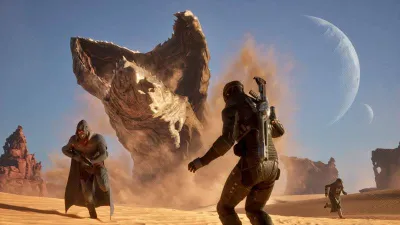
Absolutely! Here’s a feature-style breakdown for:
🌍 Exploring the Evolution of Open-World Games
From pixelated playgrounds to expansive virtual universes, open-world games have come a long way. What started as sandbox experiments have evolved into deeply immersive, story-rich experiences that define modern gaming.
Let’s take a journey through their evolution—and how they’ve reshaped the industry.
🕹️ 1. The Origins: Freedom Within Limits
Early examples like The Legend of Zelda (1986) and Elite (1984) gave players a taste of non-linear exploration. Despite hardware limits, these games laid the foundation for the “play-your-way” mentality.
🧠 Key innovation: Letting players stray from the main path—even if the world was mostly empty.
🛠️ 2. The 3D Revolution: True Space to Explore
The late ’90s brought true 3D freedom.
- GTA III (2001) made city-based open worlds mainstream.
- Morrowind (2002) gave players a sprawling fantasy landscape.
- Far Cry (2004) showed how enemy AI and terrain could create emergent gameplay.
🧭 Key shift: Exploration and mission choice became core mechanics, not just bonuses.
🌐 3. The Golden Era: World-Building as Storytelling
In the 2010s, open-world games matured with deeper stories, more detailed environments, and reactive systems.
- The Witcher 3 (2015) delivered handcrafted quests with emotional impact.
- Skyrim (2011) let players shape the world with choices and mods.
- Red Dead Redemption 2 (2018) created a world that felt truly alive.
🎥 Key feature: Cinematic, interconnected worlds with emotional storytelling.
🌌 4. Procedural vs. Handcrafted
Games like Minecraft (2009) and No Man’s Sky (2016–2020+) pushed procedural generation to the forefront—creating infinite or near-infinite worlds.
But players still crave crafted experiences—where every rock, ruin, or village has meaning. This sparked a hybrid design trend: curated randomness.
🔀 Key debate: Infinite space or meaningful space?
🔄 5. Emergence & Systems Thinking
The best modern open-worlds aren’t just big—they’re interconnected.
- In Breath of the Wild (2017), physics-based interactions meant players could invent solutions.
- Elden Ring (2022) gave minimal direction, trusting player curiosity.
- Tears of the Kingdom (2023) introduced fusion and verticality—rewriting what open-world interactivity means.
💡 Key evolution: Player agency = emergent gameplay, not scripted paths.
🎮 6. The Modern Frontier: AI, Multiplayer, and Beyond
As of 2024–2025, open-worlds are evolving again:
- AI NPCs respond dynamically (Starfield and upcoming AI-driven worlds).
- Persistent online worlds (like GTA Online, Rust, Ark II) blur the line between MMO and sandbox.
- VR integration is opening up full-immersion possibilities in games like Asgard’s Wrath 2.
🚀 Key question: Will future open worlds feel like real second lives?
🧭 The Essence of Open-World Games
At their core, open-world games give players:
- Freedom to roam
- Choice in action and consequence
- A sense of wonder and discovery
- Worlds that feel lived in, not just played in
And in 2025 and beyond, the genre continues to push boundaries—both technically and creatively.
🎯 Final Thought
Open-world games have grown from simple “go-anywhere” maps to full-fledged interactive universes. Whether you’re building kingdoms, climbing alien peaks, or just fishing by a digital lake, these worlds aren’t just settings—they’re experiences.
Want to create your own open-world concept or analyze one of your favorites in detail? I’d love to dive deeper!